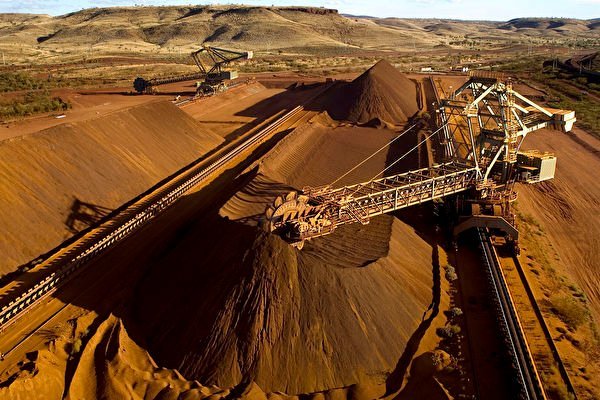China has adjusted its main short-term and long-term interest rates for the first time in 11 months, but the reaction from the commodities market, usually considered the biggest beneficiary, has been notably tepid.
The People’s Bank of China, the country’s central bank, announced on Monday (July 22) that it would reduce the seven-day reverse repurchase operation rate by 10 basis points, from 1.8% to 1.7%. Shortly after the announcement, the National Interbank Funding Center authorized a 10 basis point decrease in both the 1-year and 5-year Loan Prime Rates (LPR).
This marks the first rate cut since August last year, but it did not prompt strong buying interest in iron ore and copper, two commodities closely associated with key sectors of the Chinese economy, such as construction and manufacturing.
Benchmark iron ore futures on the Singapore Exchange fell by 0.4% to $106.79 per ton, while domestic main contracts on the Dalian Commodity Exchange (DCE) dropped by 0.3% during daytime trading to 798.5 yuan per ton ($109.79).
London copper closed down by 1.0% at $9,216.50 per ton, marking the weakest closing price since April 8. Meanwhile, the main copper contract in Shanghai closed at 76,220 yuan per ton, down by 0.86% and also the lowest closing price since April 8.
The response of copper prices to the interest rate cut has been lackluster as policymakers in China are perceived to not be making significant efforts to boost the world’s second-largest economy.
The Third Plenum held by the Chinese Communist Party last week failed to inspire confidence as the government’s measures to stimulate the housing market and revive sluggish economic growth did not materialize as expected.
Concerns about the upcoming U.S. presidential election in November, where Donald Trump is expected to win and potentially increase tariffs on China and other countries, have also contributed to a cautious outlook on China’s economic prospects.
However, worries about commodities in relation to China are mainly emotional, as the trading patterns and pricing dynamics of iron ore and copper seem to be more correlated.
China’s iron ore imports in July are expected to remain strong, with commodity analysis firm Kpler estimating imports to reach around 1.11 billion tons.
If customs data aligns with Kpler’s projections, there will be a significant increase compared to the official report of 97.61 million tons in June.
Iron ore imports into China have been robust so far this year. Customs data shows that iron ore imports in the first half of the year reached 611.18 million tons, an increase of 35.05 million tons compared to the same period in 2023, representing a 6.2% growth.
However, much of the import growth has been used to rebuild inventories, with port stock monitored by consultancy firm SteelHome increasing by 35.1 million tons since the end of last year to reach 149.6 million tons as of the week of July 24.
Steel mills and traders have been taking advantage of the downward trend in iron ore prices this year to raise inventory levels, as stock levels hit a seven-year low in October last year.
The import and export of copper also seem to reflect market dynamics, with China’s unwrought metal arrivals dropping significantly to 436,000 tons in June, a 15.6% decrease from the 514,000 tons in May.
This is due to a sharp increase in copper prices, with London contracts hitting a historical high of $11,104.50 per ton on May 20.
The price surge has effectively closed the arbitrage window for Chinese traders, who are no longer buying copper to increase inventory as they did earlier this year, opting to sell to global markets instead.
In June, China’s refined copper exports surged to 157,751 tons, setting a new record high and more than doubling the export volume in May, marking a 55% increase from the previous high 12 years ago.
Copper inventories monitored by the Shanghai Futures Exchange have started to decline from their four-year high, dropping from 339,964 tons in the week ending July 7 to 309,182 tons by the week ending July 19.
The overall message from the Chinese iron ore and copper markets is that traders are more responsive to global pricing and market dynamics than to policy shifts.
Although rate cuts and other stimulus measures may eventually translate into higher physical demand, the current demand for iron ore and copper in China is better understood through price trends.
Iron ore refers to mineral ore containing iron elements or compounds that are almost exclusively used as raw materials in steel production. Steel is a pillar industry in the national economy, and iron ore is a crucial raw material for steel production, with approximately 1.6 tons of iron ore needed to produce 1 ton of pig iron, accounting for over 60% of the cost of producing pig iron.
Based on their iron content, iron ore can be categorized into four main types: magnetite, hematite, limonite, and siderite. Due to differences in chemical composition, crystal structure, and geological conditions, various types of iron ore possess different external morphology and physical characteristics.
China is the world’s largest producer and consumer of steel, accounting for over half of global production and sales. Additionally, China is the largest importer of iron ore, with a high dependency on foreign suppliers, importing over 1 billion tons of iron ore annually, representing 70% of international iron ore trade volume.
Copper is both a metallic element and a transition metal. Pure copper is a soft metal with good ductility, high thermal and electrical conductivity, making it the most commonly used material in cables, electrical and electronic components, and construction materials.
(*This article referenced reports by Reuters)

